SMALL NOTE AS YOU READ. YOU CAN CLICK ON ANY PHOTO OR NEWSPAPER AND ENLARGED IT. THANK YOU AND PLEASE ENJOY! |
Nestled in the heart of Sheridan, Wyoming, Kendrick Park, formerly known as Pioneer Park, has been a source of nostalgia and cherished memories for its residents for over a century. At the center of its allure and charm lies a rich history, dating back to the early 1900s when it housed Wyoming's largest zoo. This captivating tale takes us on a journey through time, exploring the origins, growth, and eventual closure of this iconic wildlife park.

The Philanthropic Genesis: John Benjamin Kendrick

In 1905, a prominent figure in the history of Sheridan and Wyoming, made a philanthropic gesture that would leave an indelible mark on the region and create a legacy that endures to this day. At that time, the land he generously donated was first known as Kendrick Park. The man in question was none other than John B. Kendrick. Kendrick had a grand vision in mind. John B Kendrick disliked this and the park then was to be known as Pioneer Park.
His vision went far beyond just donating a piece of land; it was about nurturing a profound connection between the community and the untamed wilderness of the region. He envisioned a place where people could escape the hustle and bustle of city life, where they could find solace in the midst of nature, and where they could witness the untamed beauty of Wyoming's native wildlife. Little did he know that this act of benevolence would be the catalyst for something much greater than he could have ever imagined. Kendrick's legacy continued to grow, shaping the park into a symbol of his vision for harmony between humans and nature.
The Animal Kingdom: Beginnings of Iconic Residents
The year 1909 marked a milestone with the introduction of a delightful array of creatures. Deer, monkeys, goats, and bears became the stars of the show, enchanting both young and old visitors. Notably, Eula Kendrick, John Kendrick's wife, contributed to the zoo's diversity by gifting red squirrels and golden pheasants in March 1910, adding an exotic flair to the growing collection. While some initially referred to it as an "amateur" endeavor, it was driven by a noble purpose: to provide a window into the captivating world of Wyoming's wildlife. Operated as not-for-profit, the zoo was fueled by a profound love for animals and a commitment to offering a space for public.
Today, that land, once known as Pioneer Park, stands as a testament to John B. Kendrick's foresight and generosity. Kendrick Park continues to captivate visitors with its majestic elk and bison, but their history is deeply rooted in the past.
In late 1909, Sheridan's Deputy Game Warden, John Duncan, asked the Sheridan Rod and Gun Club (Predecessor to today's Sheridan County Sportsman's Association) if they would be interested in partnering in a project to return elk to the Bighorns. The club agreed and with the support of local landowners such as Howard Eaton, a plan was made to bring elk back to the Bighorns. Elk would be trapped and transported from Jackson to Sheridan in early spring of 1910.
Large corrals were built near Jackson, the elk were baited in with hay and then the gates were shut. They were placed in individual boxes, loaded on sleds and sledded over the top of Teton Pass to St. Anthony, Idaho where they were placed on railroad cars. Departing from St. Anthony, on March 15, 28 yearling elk began a 19-day journey from St. Anthony to Blackfoot, Pocatello and Montpelier, Idaho and on through Kemmerer, Rawlins, and Cheyenne, Wyoming, on to Scottsbluff and Alliance, Nebraska before arriving in Sheridan on April 2, 1910. 25 of the 28 elk survived the transport.
The Elk were moved from the train station to Kendrick Park where they were held for several days while Duncan and members of the rod and gun club cared for them.
When conditions in the mountains were judged to be satisfactory, 20 elk were transported to Eatons Ranch on April 24 where they spent the night in corrals, and then on the next day released and gently herded into the mountains.
The year 1912 witnessed an exciting addition to the zoo—a pair of fawns, several broods of ducks, and pheasants arrived in June, further enhancing the park's charm. The excitement continued in subsequent years, as bears, monkeys named Abe and Laura, Belgian Hares, deer, chickens, dogs, and even thousands of bass for the pond joined the eclectic roster. As time passed, the zoo's collection continued to expand.
In 1914, Kendrick's generosity extended to the donation of four young bison, solidifying the zoo's unique character. Visitors could marvel at a diverse array of animals, including wolves, coyotes, bears, badgers, porcupines, great horned owls, and a variety of smaller creatures like rabbits, white rats, and guinea pigs.
Click to Enlarge any photograph or Newspaper:
Video from the Sheridan Zoo. Taken approximately Mid-1960's.
Video Source: Carleen Chipps of Sheridan.
A Flourishing Menagerie:

You could also stroll through the serene gardens nestled within Pioneer Park Zoo. Here, you would likely find a colorful array of native plants that thrive in Sheridan's climate. These include hardy perennials like the Wyoming Indian Paintbrush, showcasing its vibrant red hues, and the fragrant Rocky Mountain Columbine with its distinctive blue and white petals. The garden also featured robust wildflowers like the Blue Flax and the showy Blanket flower, adding a burst of color to the landscape. Pioneer Park offered an oasis and a tranquil retreat where you can appreciate the natural beauty of Wyoming's flora, all while enjoying the zoo's wildlife.
The zoo also boasted a picturesque pond with a charming fountain. In the winter months, this pond would freeze over, creating a magical ice rink for visitors to enjoy. During the summer season, the pond came alive as it hosted a thrilling fishing derby, drawing both locals and tourists alike. The 1939 Fishing derby for children was put on by the Sheridan Sportsman's club.
Click to Enlarge any Newspapers:
Click to Enlarge any Photographs:
Check sources at the end for any captions for these photos
The Renaming of Kendrick Park:
In 1936, Pioneer Park was officially renamed Kendrick Park to honor John B. Kendrick, who had passed away three years prior. This change reflected the enduring legacy of the man who had made the park's existence possible. The Park is still named Kendrick today. It shows that one man's legacy can truly last in a community that thought very highly of him. To Honor Mr. Kendrick and his legacy a statue or column rather made of White Granite was placed in the center of the park. It still stands today although in the 1990's it was toppled over and now has a crack in the center, but has been repaired.

The Legendary Major Sheridan:
(Michael has a whole blog post about Major coming soon)
Among the enchanting residents, Major Sheridan, an African lion born in 1949 at the Pioneer Park Zoo, stood out as a star attraction. His story is one of courage and resilience, as he battled pneumonia and emerged victorious. Beyond his health struggles, Major was known for his gentle disposition and often shared a bed with his devoted owners.
Kendrick Park's Heyday:
By 1921, Pioneer Park/ Kendrick Park had firmly established itself as having "the largest zoo in the state," a title proudly proclaimed by the Sheridan Post.

The park had become more than just a zoo; it was a vibrant part of Sheridan's identity. Spanning 70 acres, it boasted lush lawns, a swimming pool, playgrounds, and, of course, a diverse and captivating array of animal residents.




Click to Enlarge any Photographs:
Check sources at the end for any captions for these photos
Tragic events:
No one ever wants to see an animal die, especially ones that are so deeply connected and loved by the Sheridan community. Unfortunately, this happened here in Sheridan. Over the course of its existence, Pioneer Park Zoo bore witness to the passing of numerous animals, each with their own unique stories. Some animals met the inevitable denouement of their life cycles, while others confronted the unrelenting challenges inherent to a zoo of Sheridan's size, ultimately necessitating euthanasia on account of their health-related predicaments. Among the pages of newspaper headlines, the announcements of the deaths of some of these prominent animals were told. The city newspaper treated these animals just as if they were any of the residents of this great city. Most notably were Old Abe, The Big Monkey, Conga and Congetta, parents of Major Sheridan, and Old Jack, a grey wolf. Each of these stories, though a mere mention in the newspaper's ink, held a chapter in the rich tapestry of Pioneer Park Zoo's history. Some of the more notable can be seen below.
Click to Enlarge any Newspapers:
Changing Perspectives on Animal Welfare:
However, as the 20th century progressed, attitudes toward zoos and the ethical treatment of animals began to shift. In 1970, The Sheridan Press published an opinion piece that criticized local zoos for confining animals to small spaces solely for the purpose of attracting visitors, without proper consideration for the welfare of the creatures. This critique ignited conversations about the ethical concerns surrounding captive animals.
Click to Enlarge any Newspapers:
The Bittersweet Farewell:
The rising costs of maintaining the zoo and the growing ethical controversies surrounding animal captivity eventually led to a difficult decision. In 1971, Kendrick Park's Zoo closed its gates, marking the end of an era. It was a bittersweet farewell to beloved animal companions that had been an integral part of the community for over six decades.

Legacy that lives on:
The story of Kendrick Park's Zoo doesn't end with its closure. Today, all that remains of the zoo is the buffalo and elk pasture, along with concert and stone foundations and a picnic shelter at the north end of Kendrick Park. The pasture has undergone significant enhancements, with expanded space, landscaping, and the installation of a sprinkler system. It stands as a testament to Sheridan's enduring love for wildlife and its commitment to preserving its history. In the collective memory of Sheridan's long-time residents, the zoo at Kendrick Park lives on as a cherished part of the city's history. It's a story of ambition, passion, and dedication—a journey that began with a generous donation of land and evolved into a vibrant menagerie that delighted generations. While the zoo may no longer be a physical presence, its spirit endures in the hearts and minds of those who fondly remember their visits to Kendrick Park and its delightful animal residents. It's a legacy that continues to inspire and connect the community with its rich history and love of wildlife. Kendrick Park, with its storied zoo, remains a symbol of Sheridan's enduring commitment to both its past and its future. Kendrick's act of philanthropy in 1905 was not just a donation; it was the inception of a remarkable journey that has enriched the lives of countless individuals and has left an enduring legacy for generations to come.
PERMISSION TO PUBLISH OLD SHERIDAN NEWSPAPER ARTICLES GIVEN BY EDITOR AND PUBLISHER OF SHERIDAN PRESS |
Newspaper Abbreviation: |
SE - Sheridan Enterprise |
SDE - Sheridan Daily Enterprise |
SP - Sheridan Post |
SPE - Sheridan Post Enterprise |
TSP - The Sheridan Press |
CST - Casper Star Tribune |
BG - Billings Gazette |
Sources:
Clipping of Image showing one corner of Zoo, Pioneer Park. You can see some people looking at the cages. In the upper left of the photo, you can see Fred H. Frebel (Friebel) who was first park superintendent. Source: Pictorial Sheridan published in 1910 and Michael Dykhorst Collection.
Deer at Pioneer Park Zoo, Photo by Roycroft Photo Shop *note - if you look closely, you can see the second "Deer" is actually an Antelope. Source: Michael Dykhorst Collection
Undated photo of one of the Kendrick Park bears. Source: The Family of Peggy Kethman
Newspapers: Newspapers from the Wyoming Newspaper Project and The Wyoming Room Microfilm Collection.
The Wyoming Room at Sheridan County Fulmer Public Library, Byron Photo Collection, 01.013. June 10, 1936, Nineteen men gathered around newly-dedicated monument to John B. Kendrick in Sheridan's Pioneer/Kendrick Park. Identified as follows, left to right: left back row - Ed Dana, bob Walsh, C.W. Harr, Tom O'Neil. left front row- Colin Williams, William Burnett, Jim Shaw, George Mitchell, Harry Crain. right back row - Frank Lacy, C.N. Walters, Dan Wood, Ed Owens, Willis M. Spear. right front row - Jeff Davis, W.P. Ricketts, Al Maxwell, Tug Wilson, Joe La Force (Shaking Hands)
Bridge in Pioneer Park about 1911. Source: Clipping Files Wyoming Room, Sheridan Fulmer Public Library.
The Pond at Kendrick Park. This was paved over to make way for parking. Source: The Sheridan Press.
Another view of the Pond at Kendrick Park. Source: The Sheridan Press.
1939 Fishing Derby held at the pond in Kendrick. The Author's 3rd cousin participated and took 2nd place. Source: Marilyn Martin Zurcher. Photo by Walt Harris.
Pioneer Park view about 1928. Source: Clipping Files Wyoming Room, Sheridan Fulmer Public Library.
People boating on the pond at Pioneer Park. Source: 1912 Ocksheperidia - Wyoming Room Files.
Dedication of the park to John B. Kendrick in 1936, forever changing the name to Kendrick Park. Wyoming Room Clipping files - Kendrick Park History
Monument erected to John B. Kendrick located in Kendrick Park. Photo taken September 2023 by Michael Dykhorst
Various photos taken in 2020 and 2023 at Kendrick Park of Buffalo and Elk Pasture with signs. Photos by Michael Dykhorst
Various photos with no captions taken from Ebay postcards, Yearbooks, Other sources online.








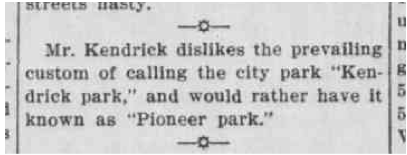




















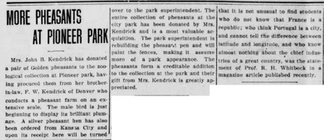

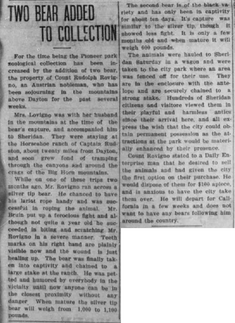









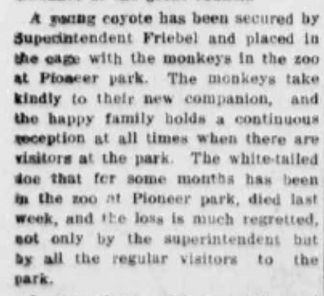









































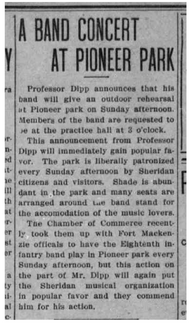









































































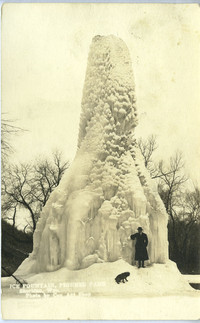









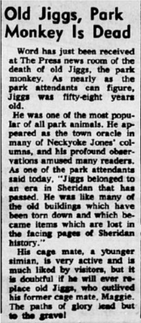



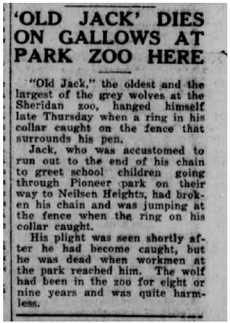







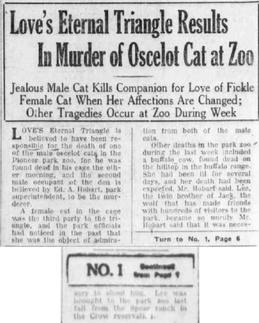

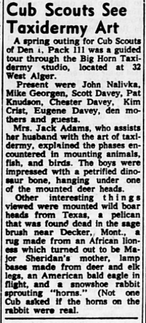




















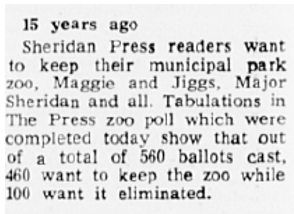























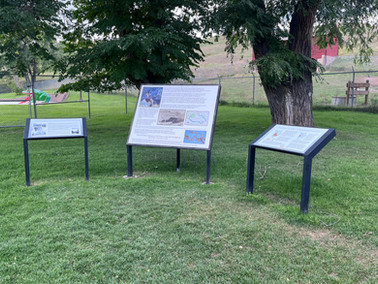



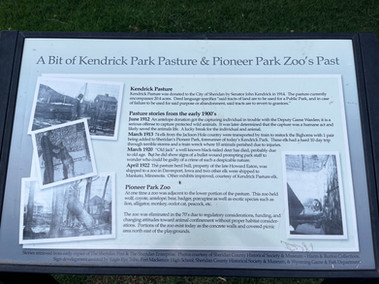







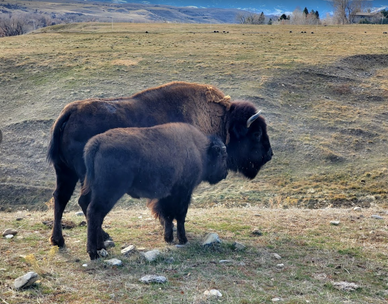








Comments